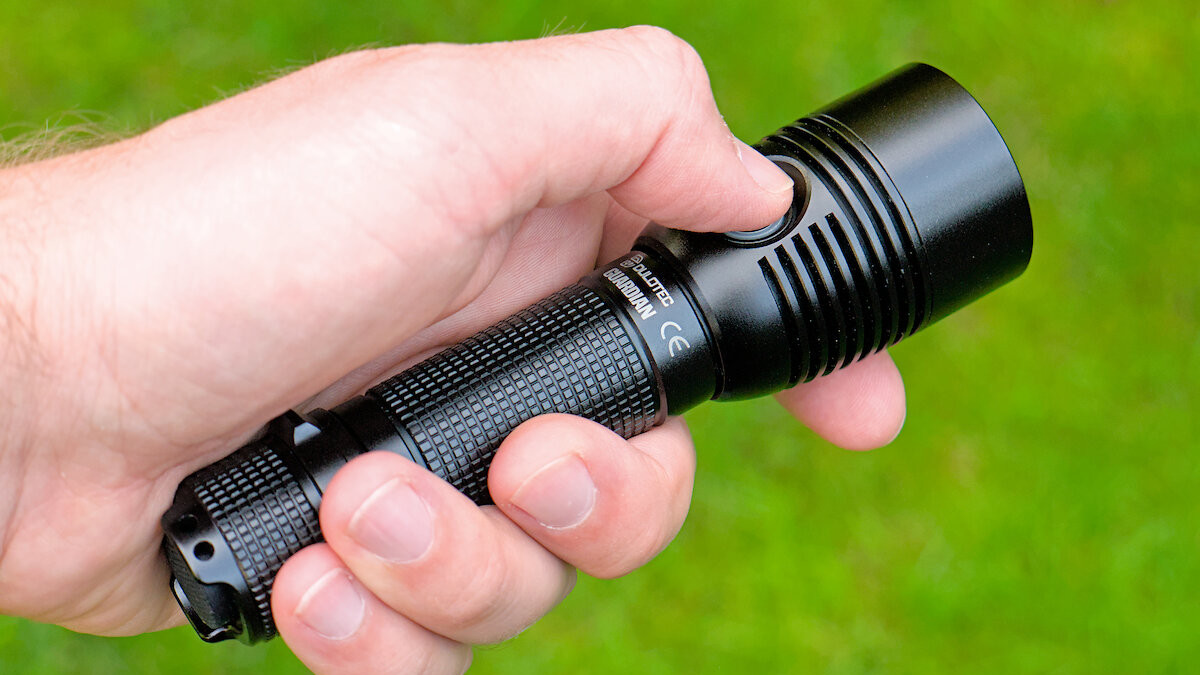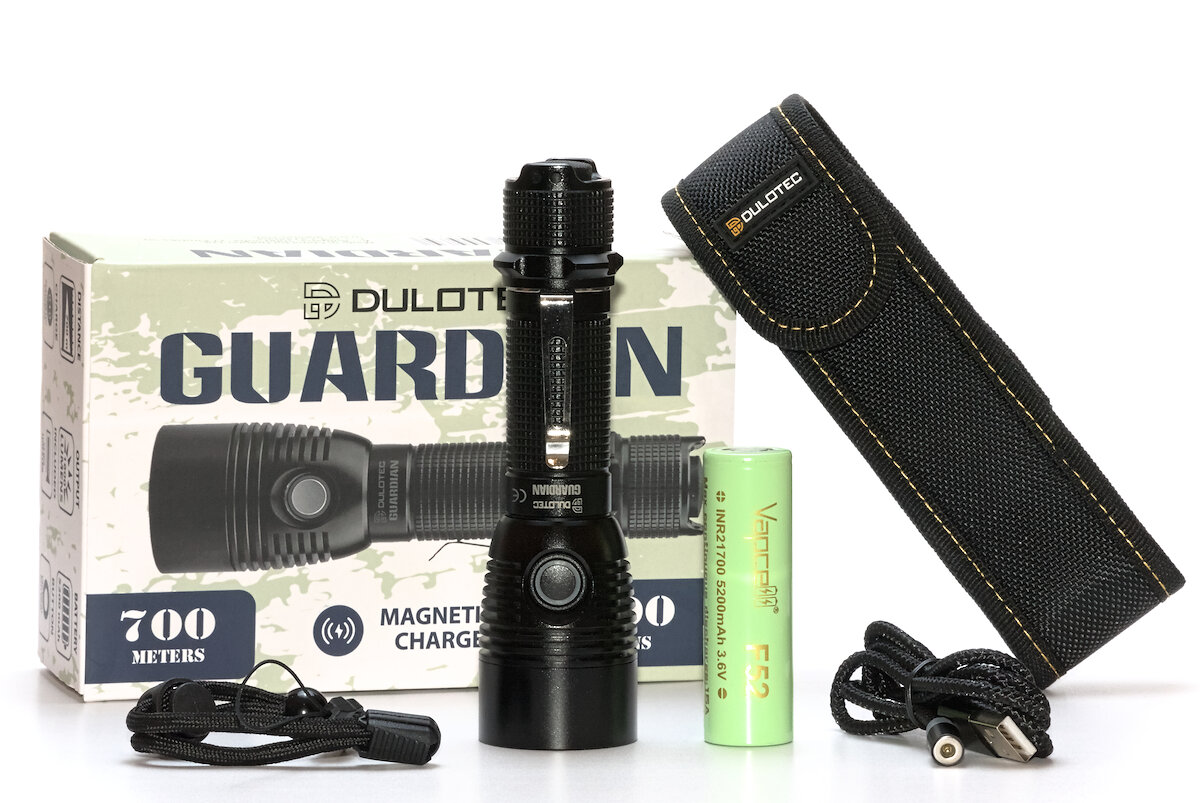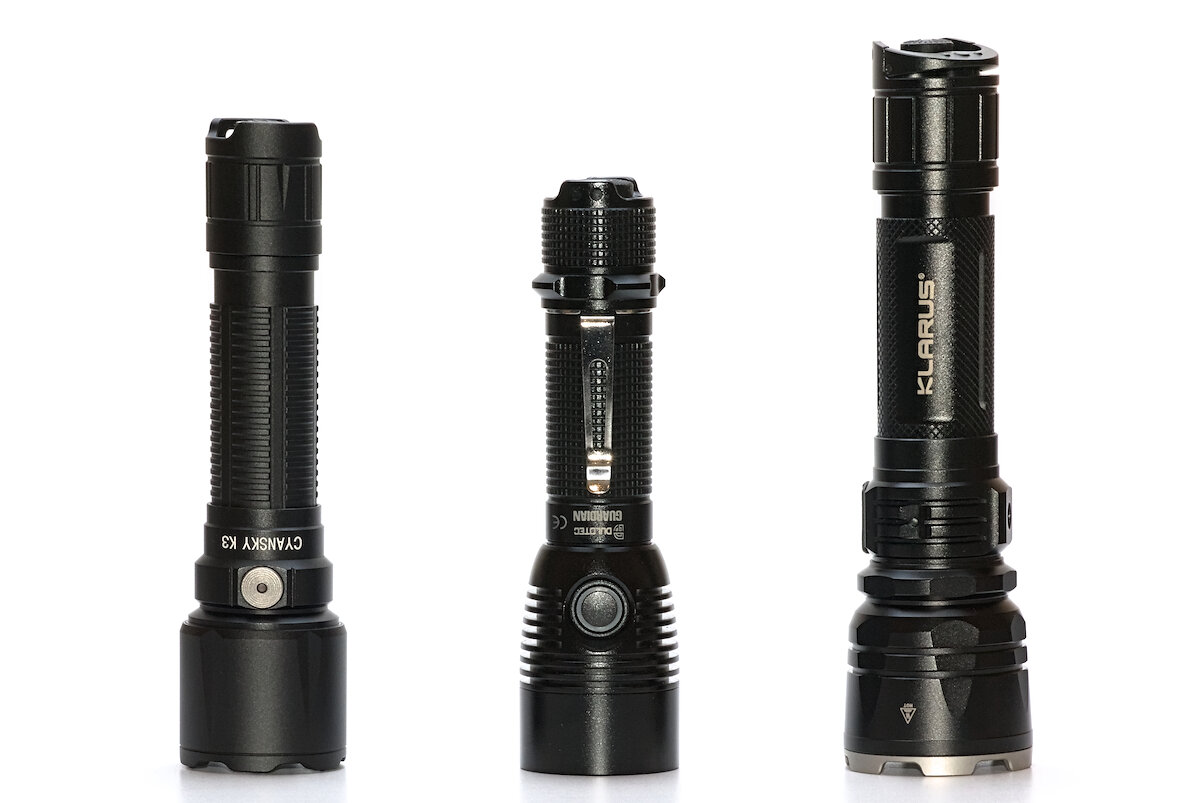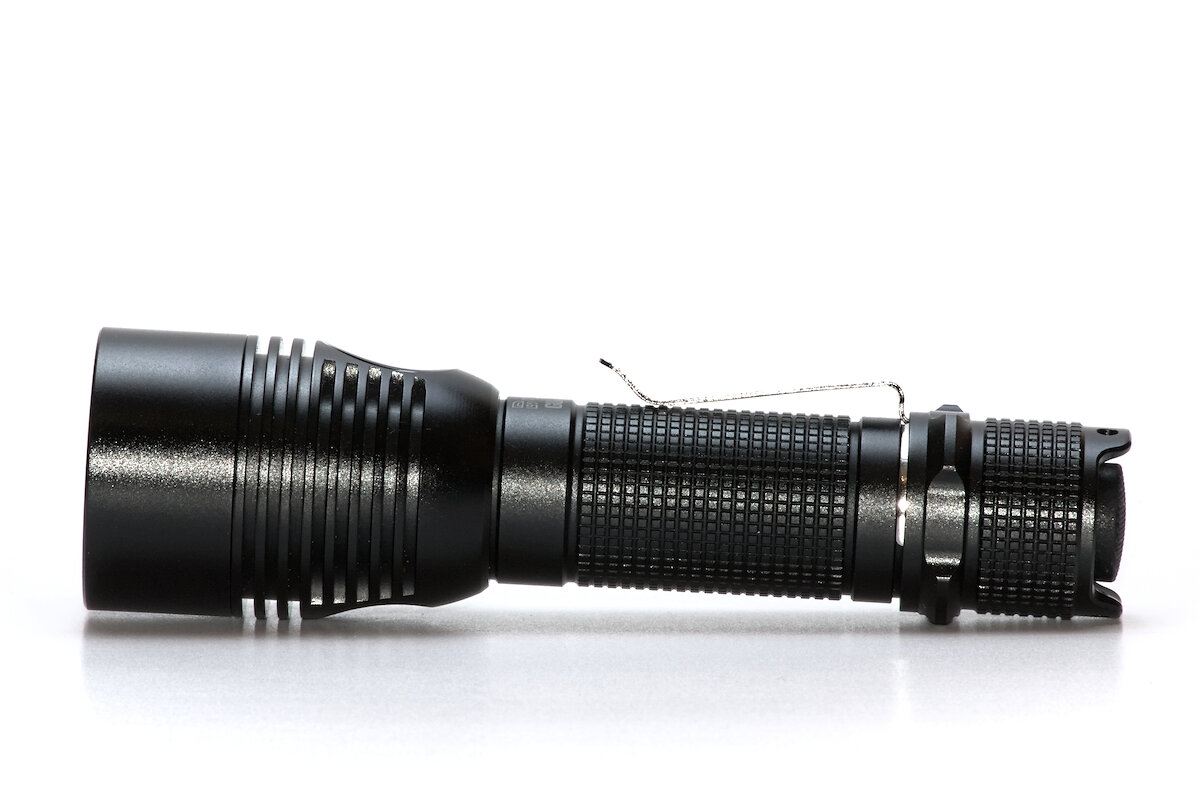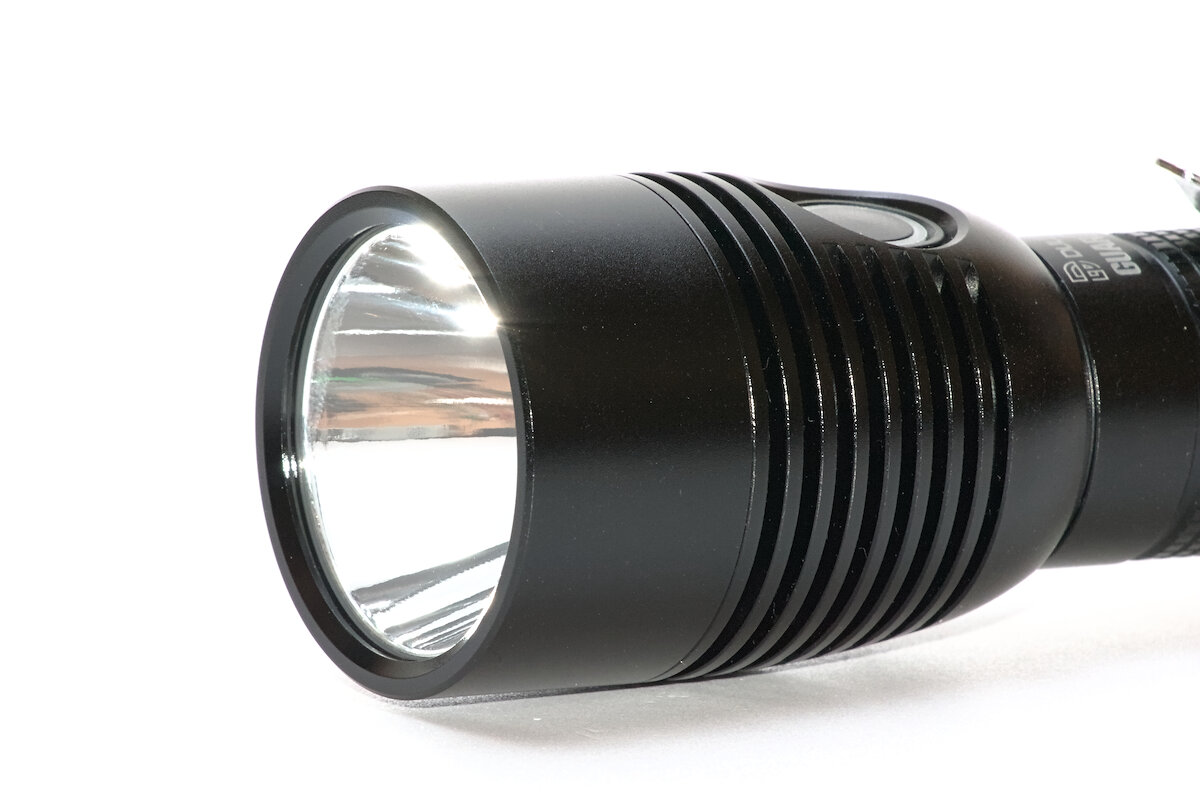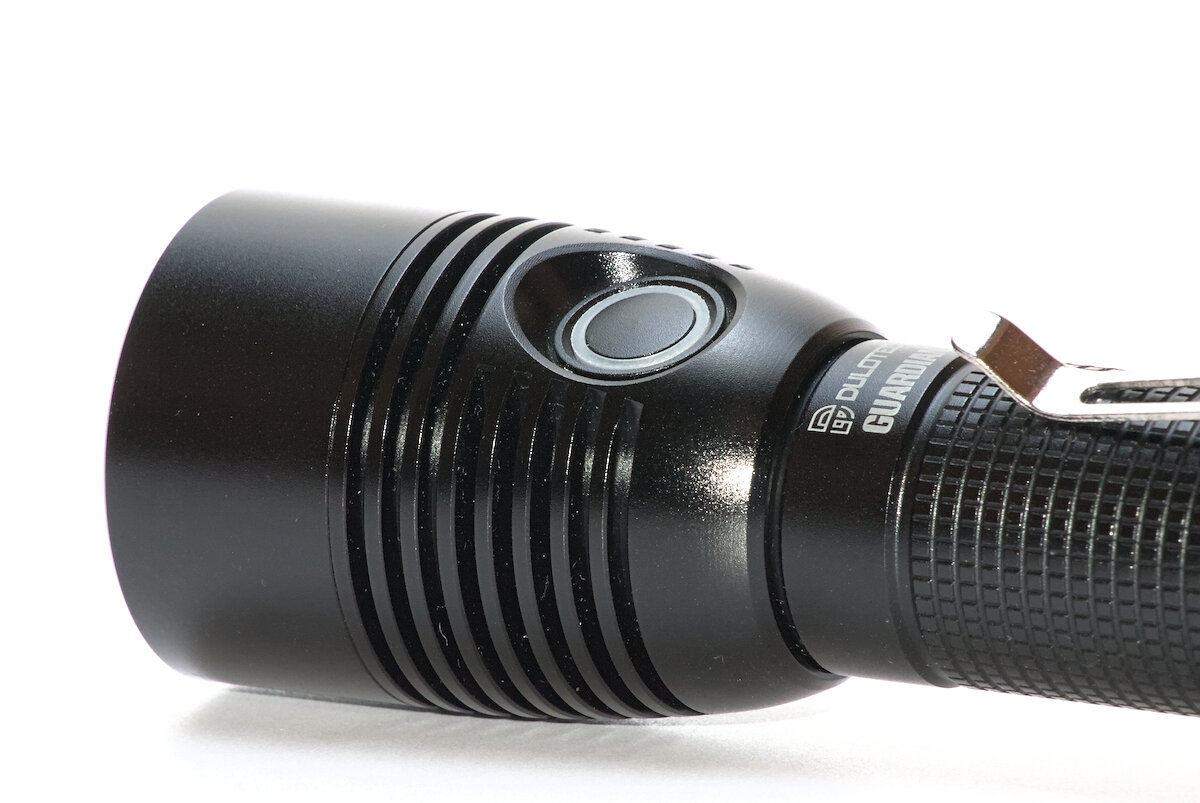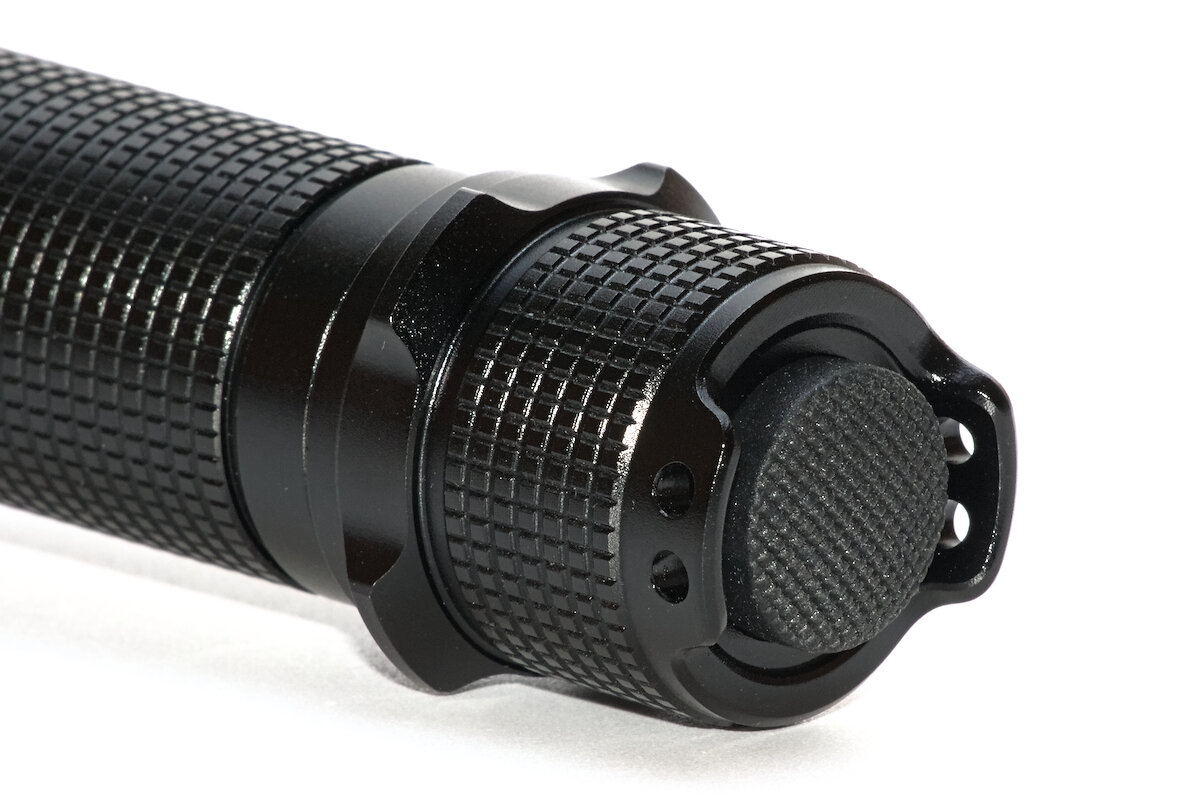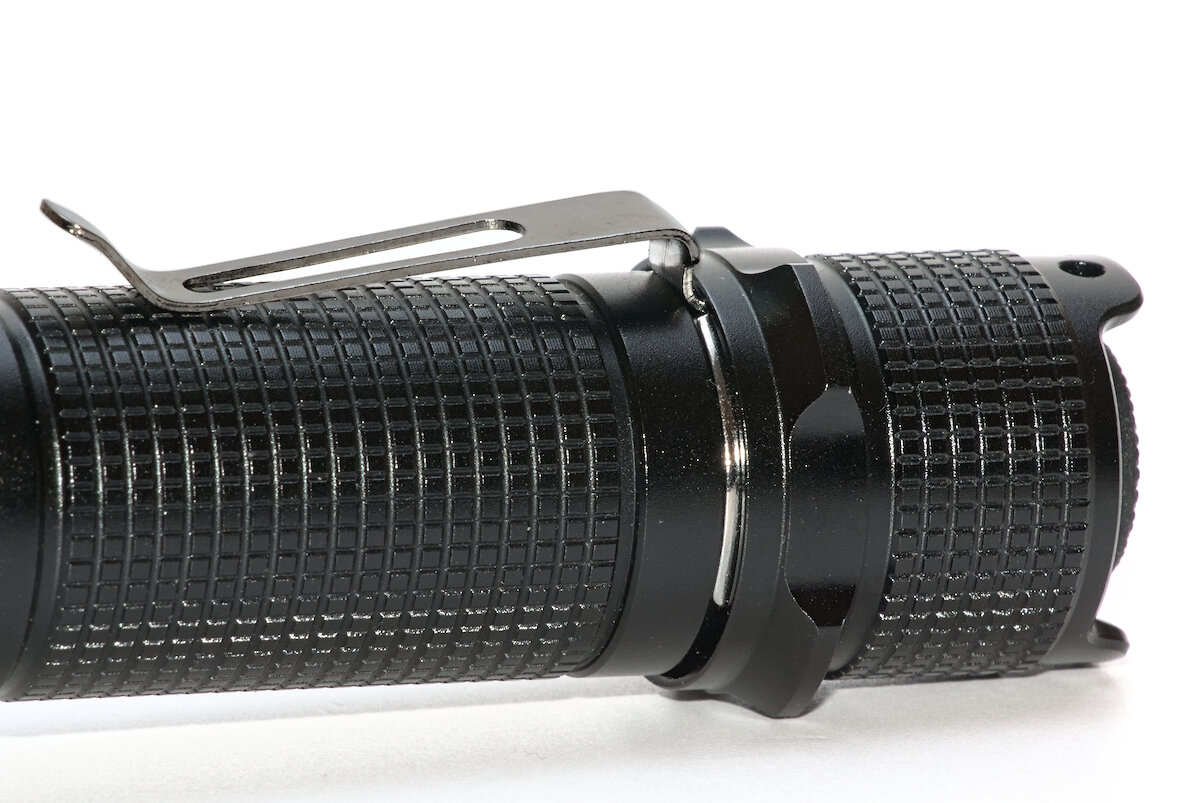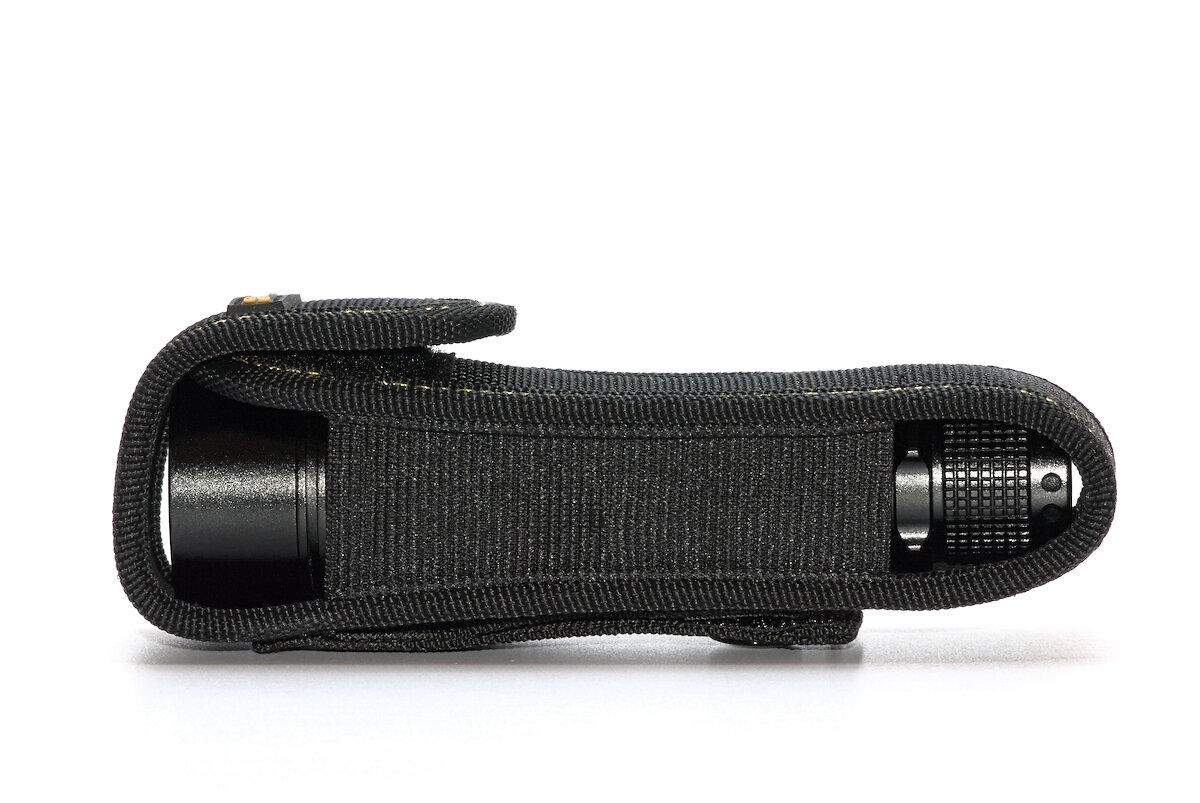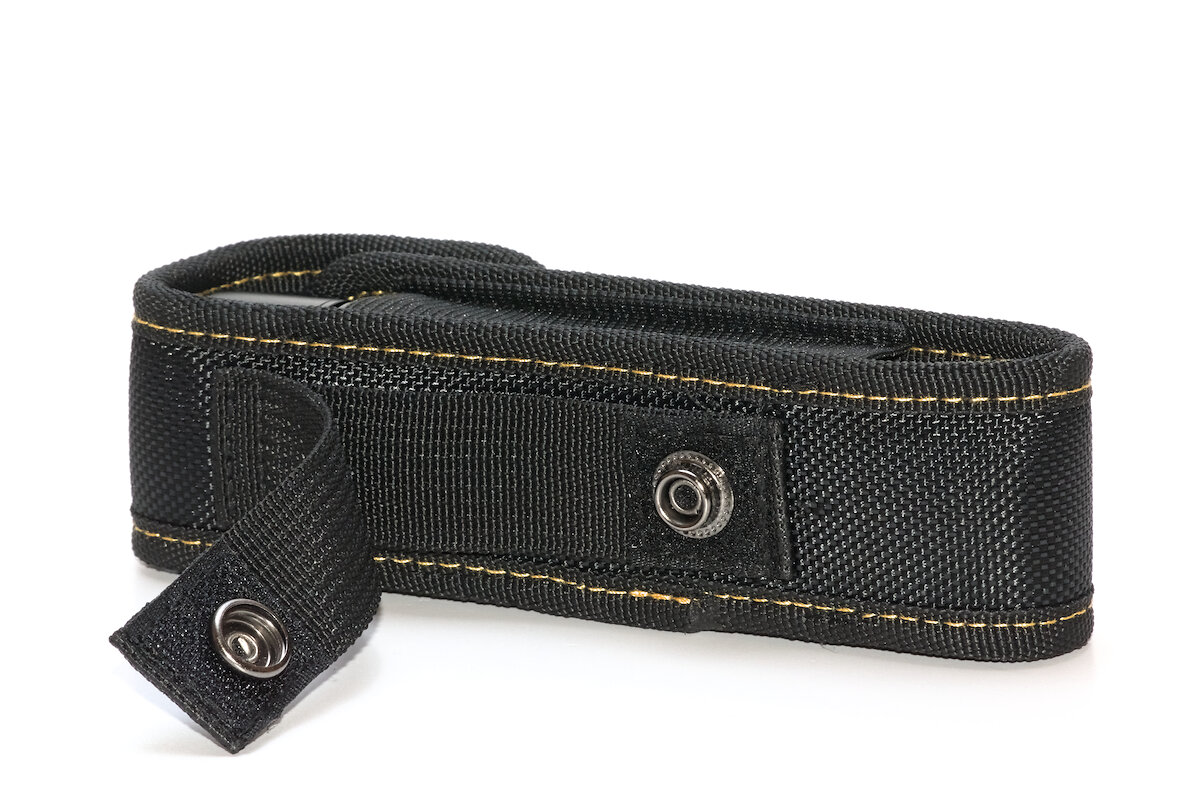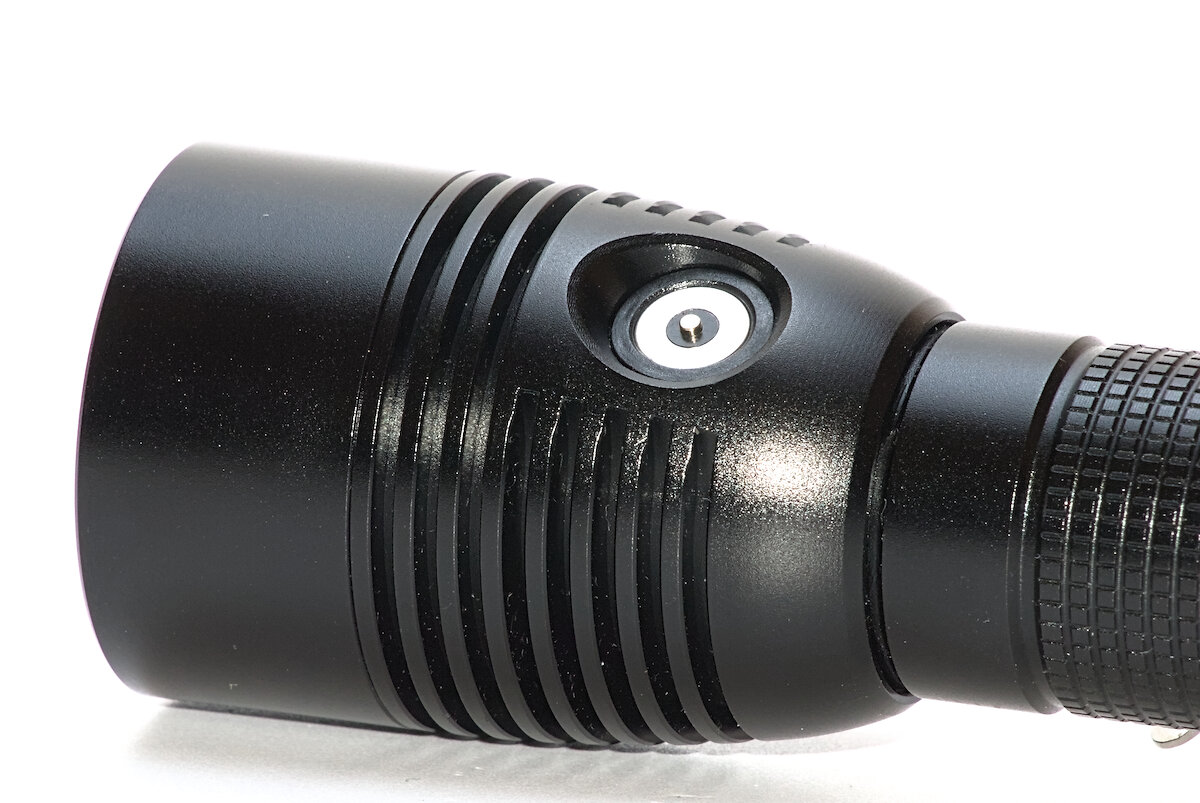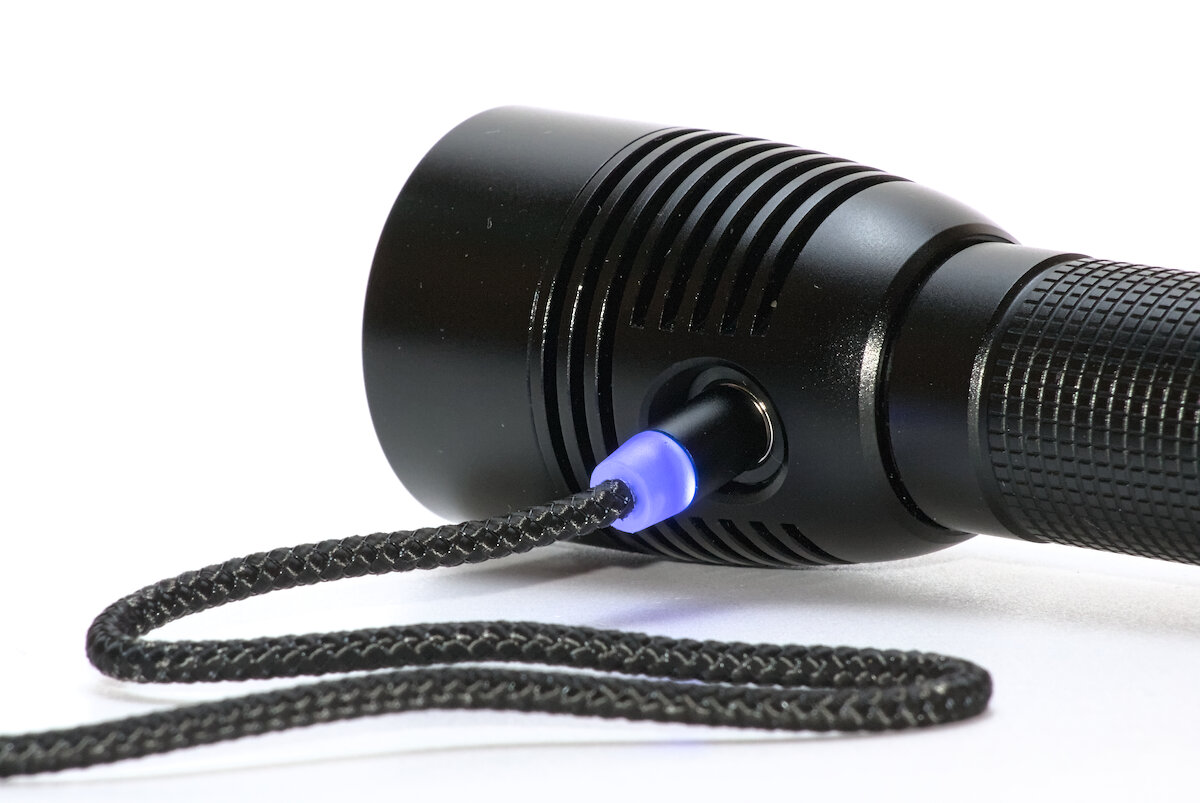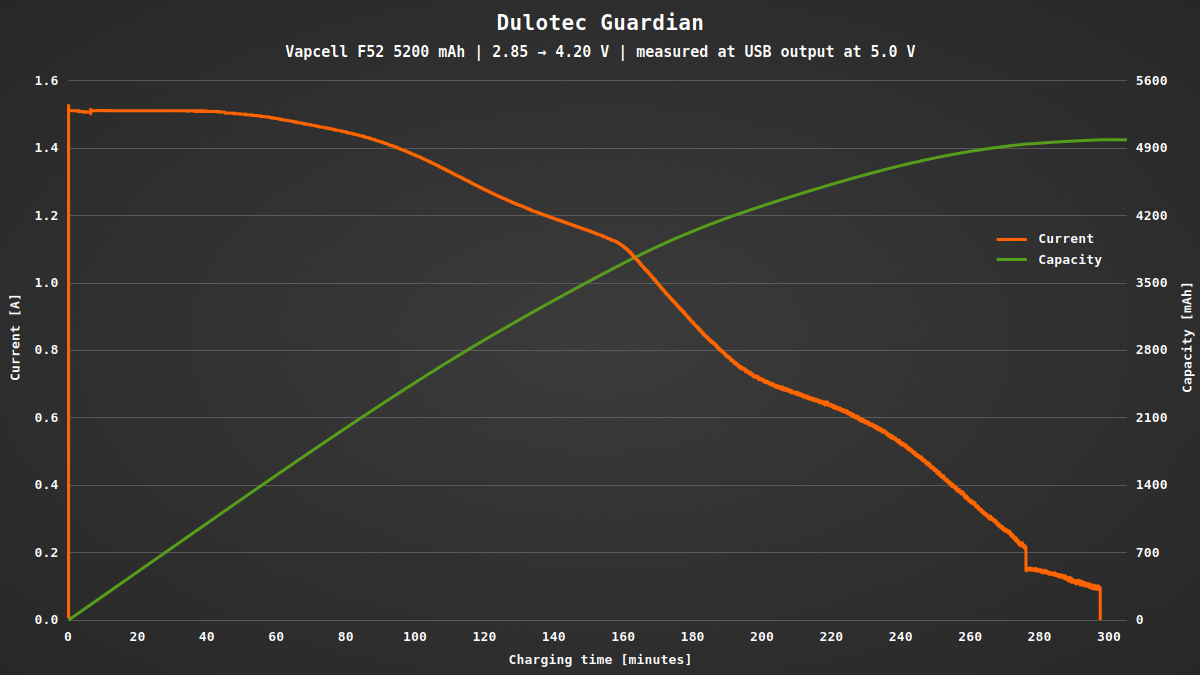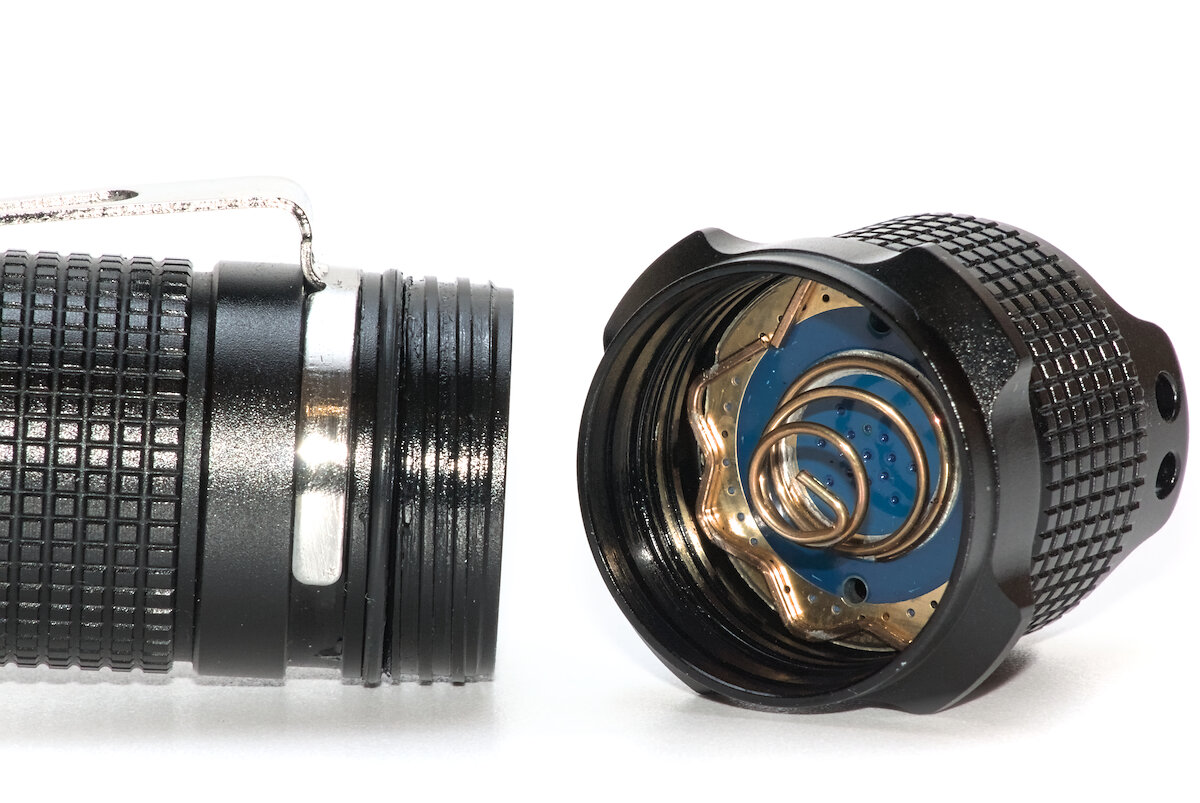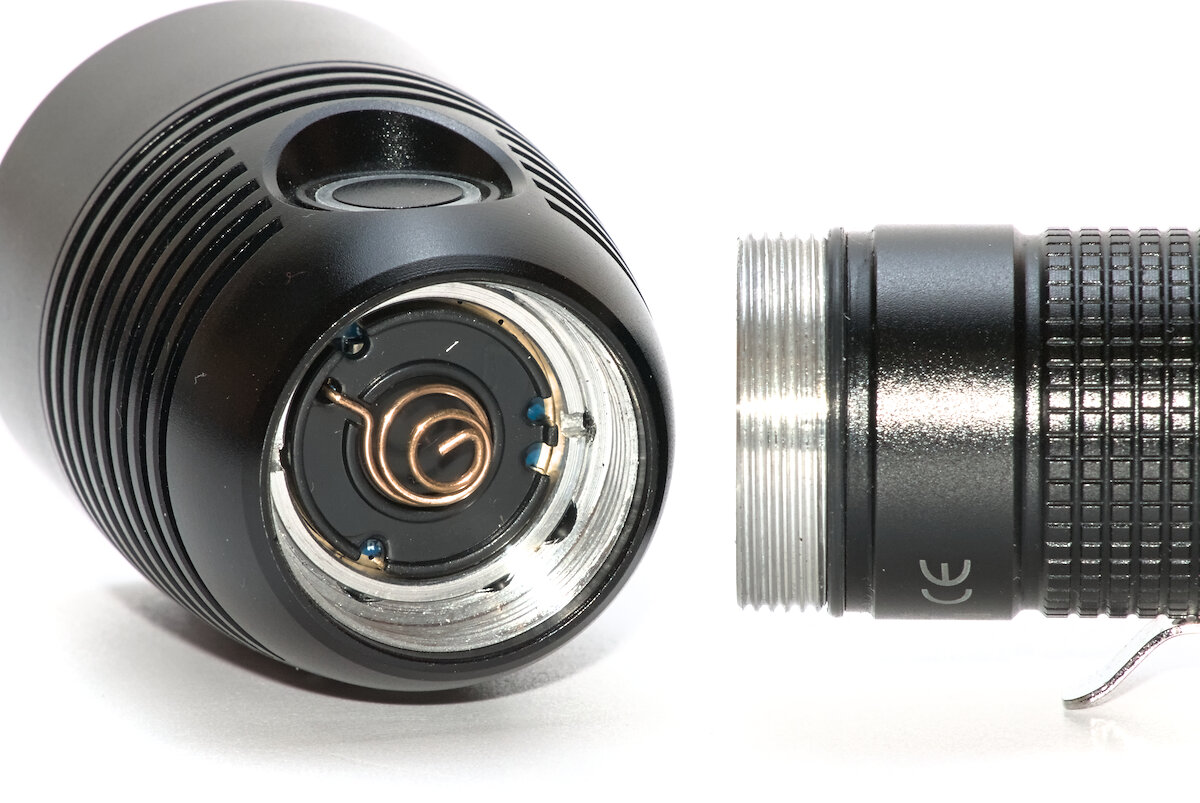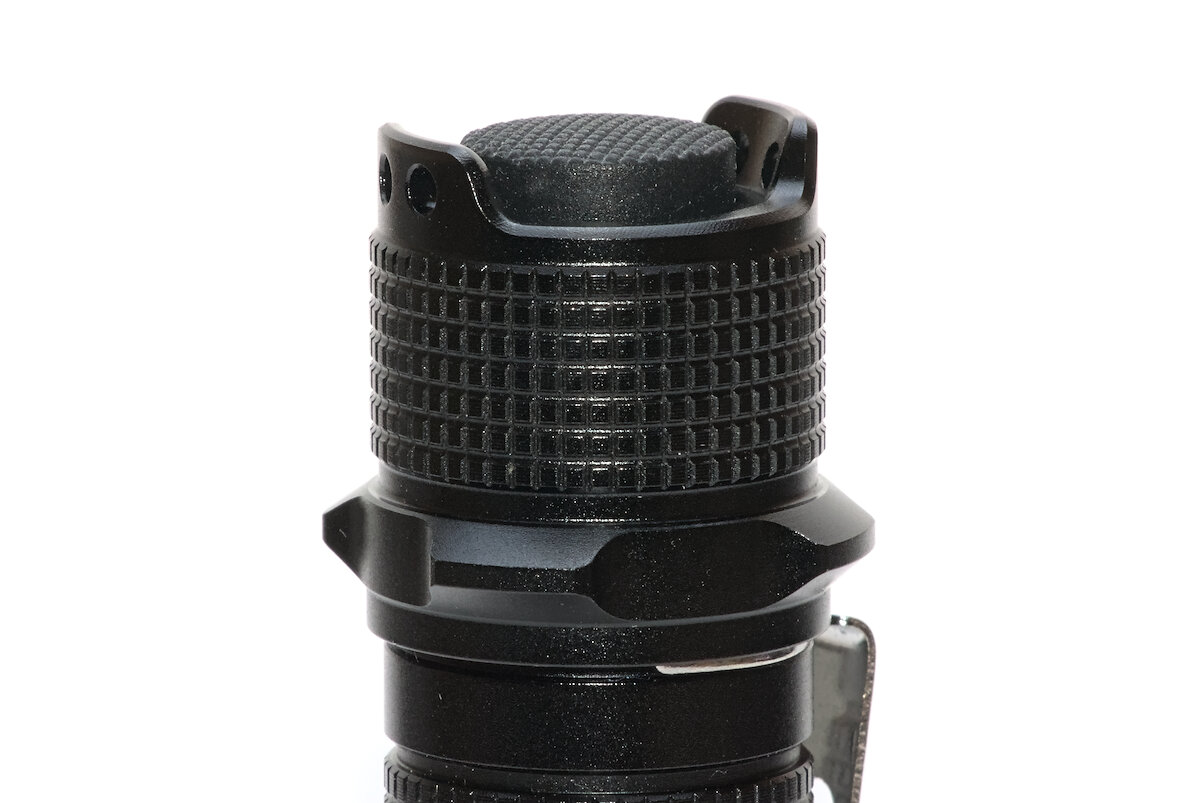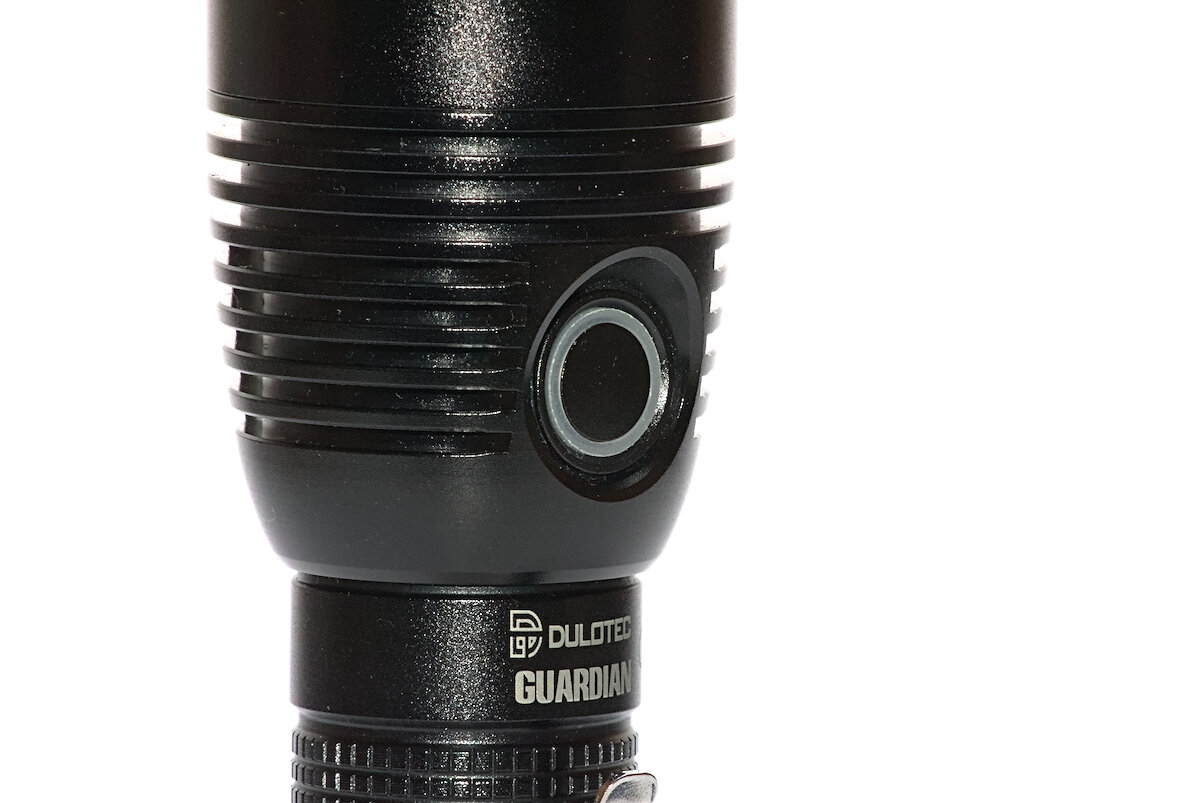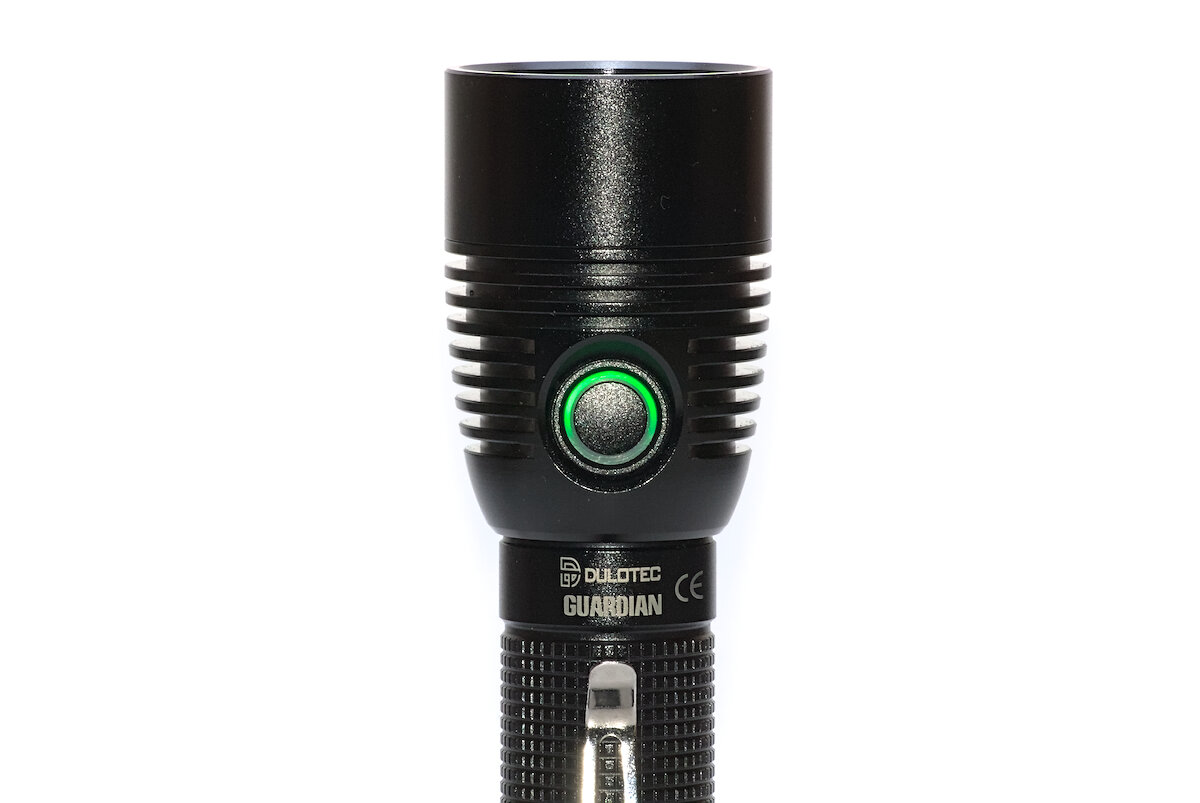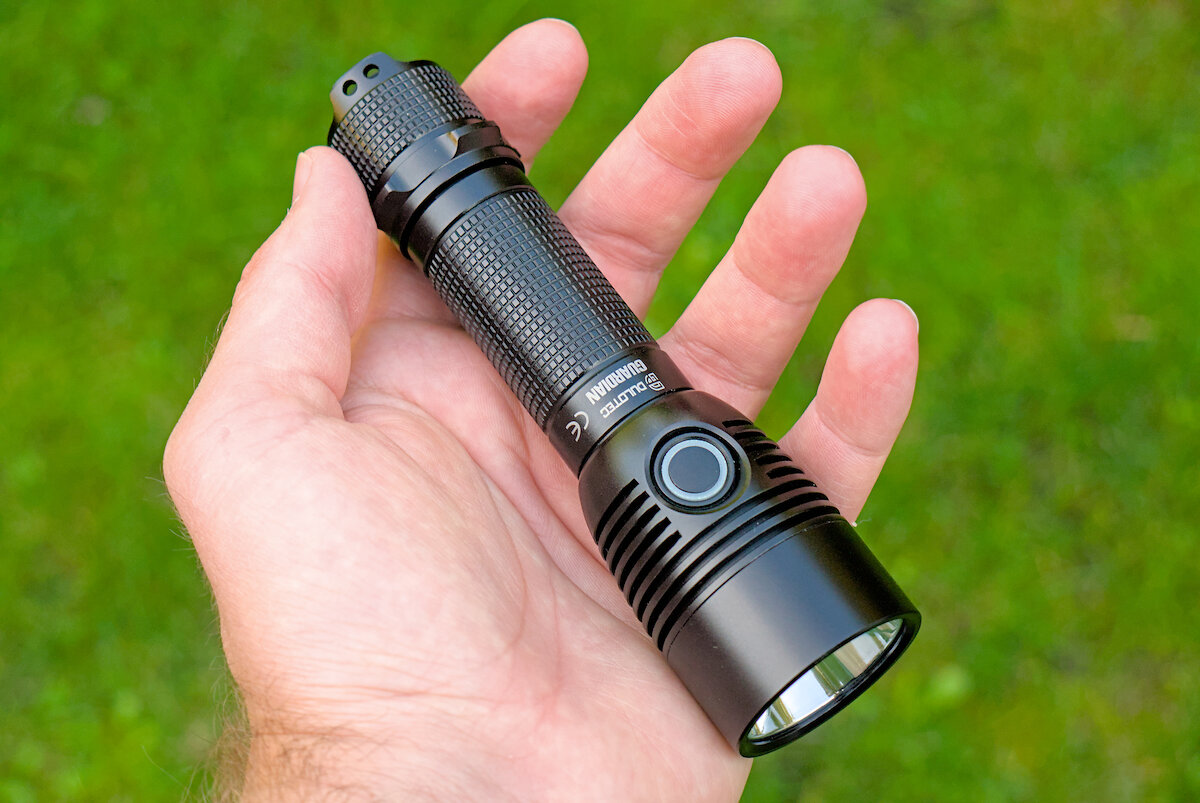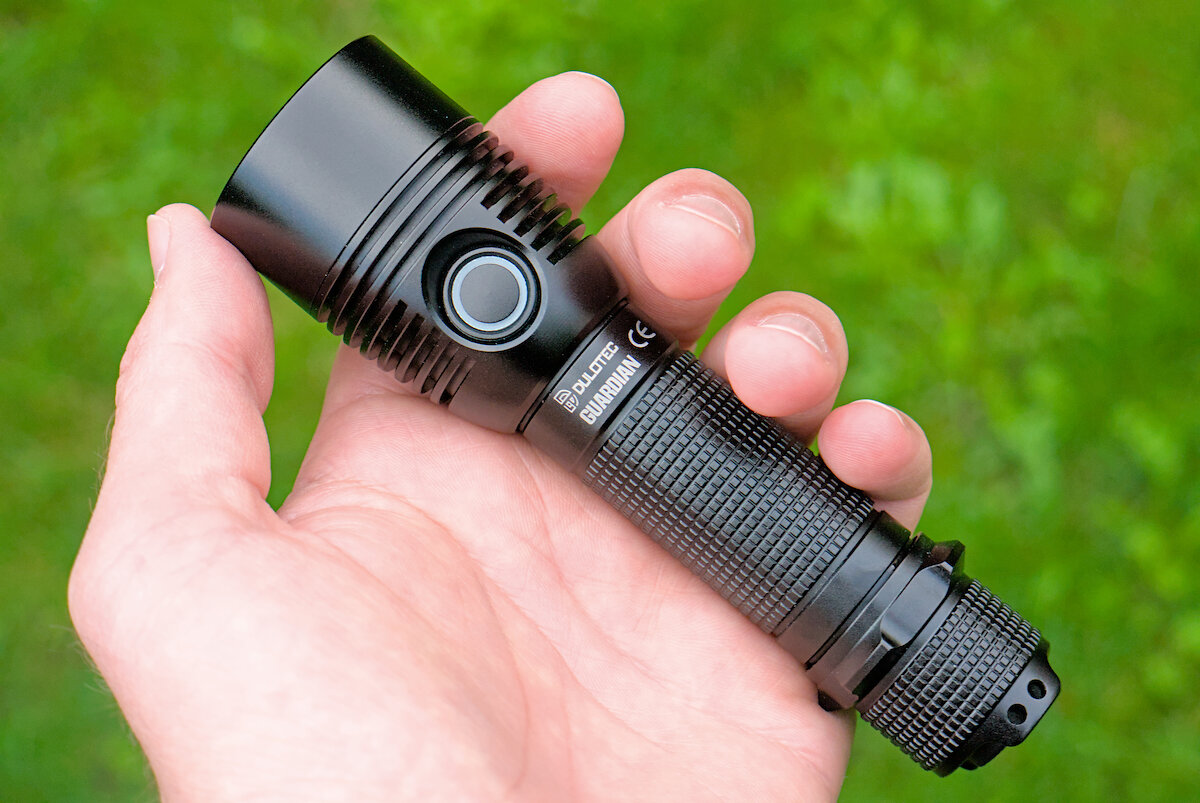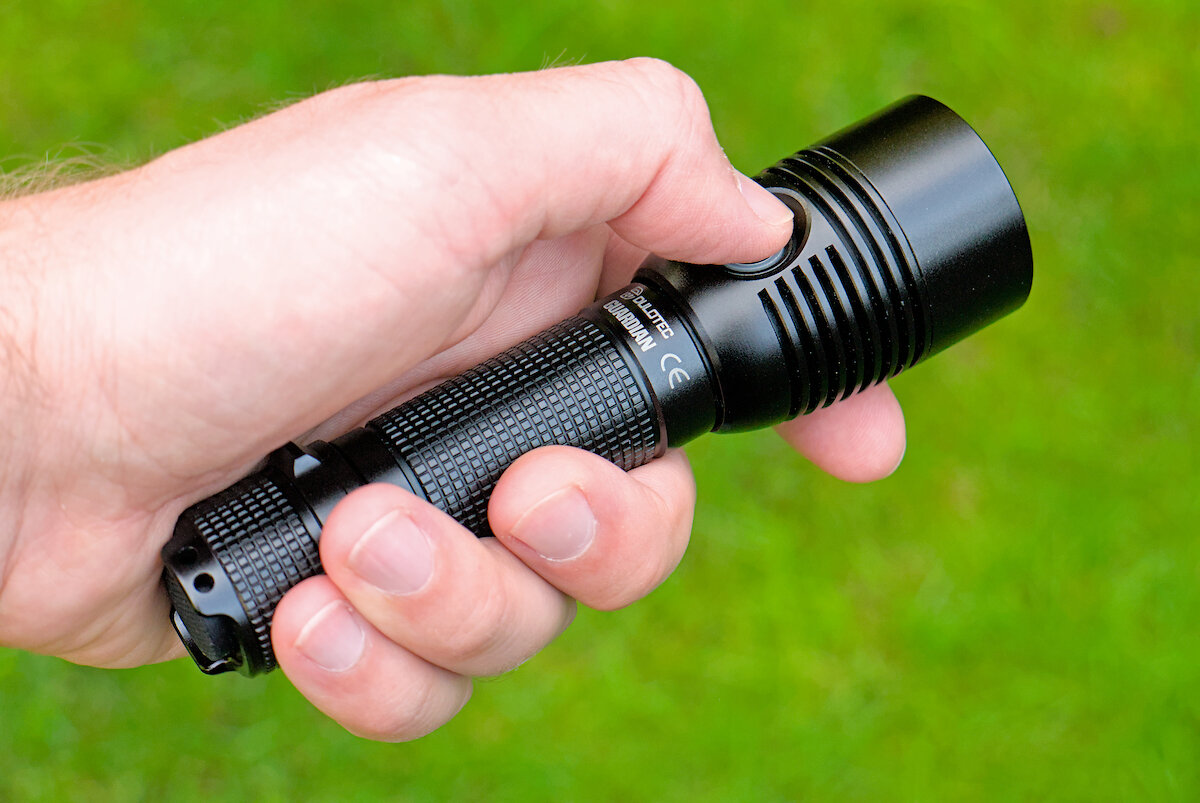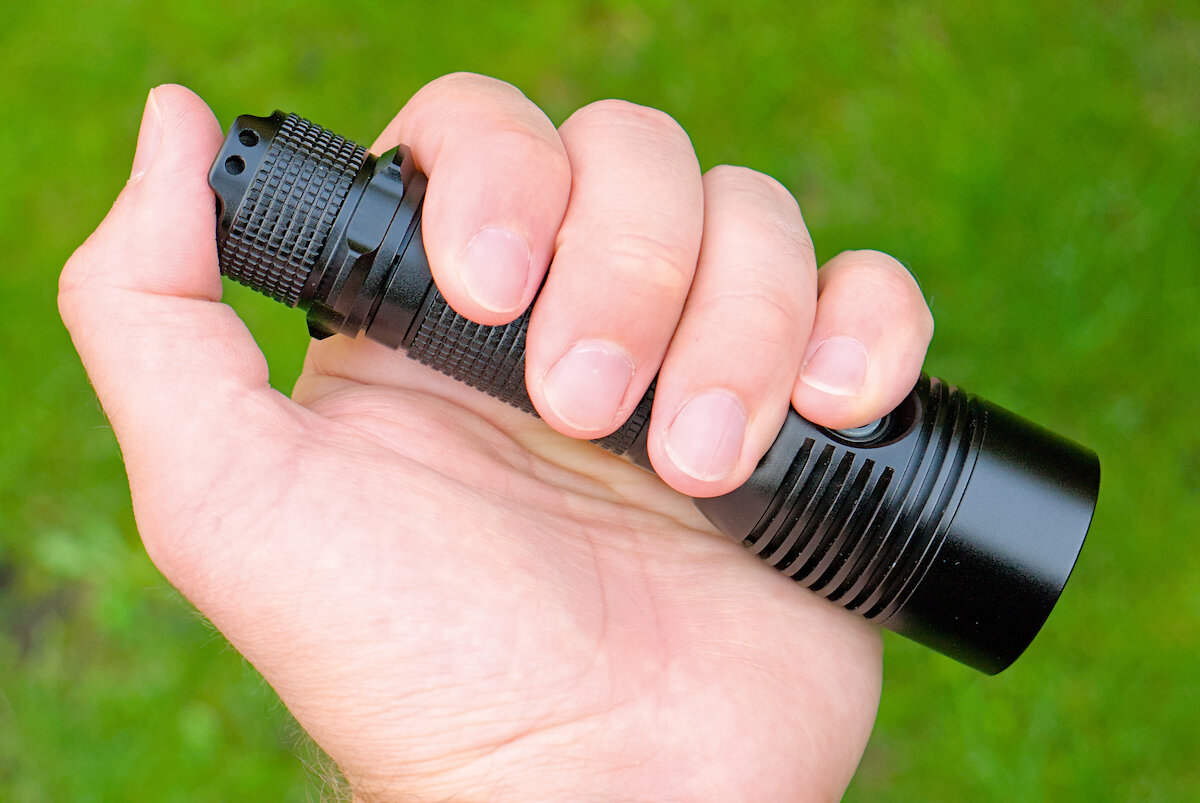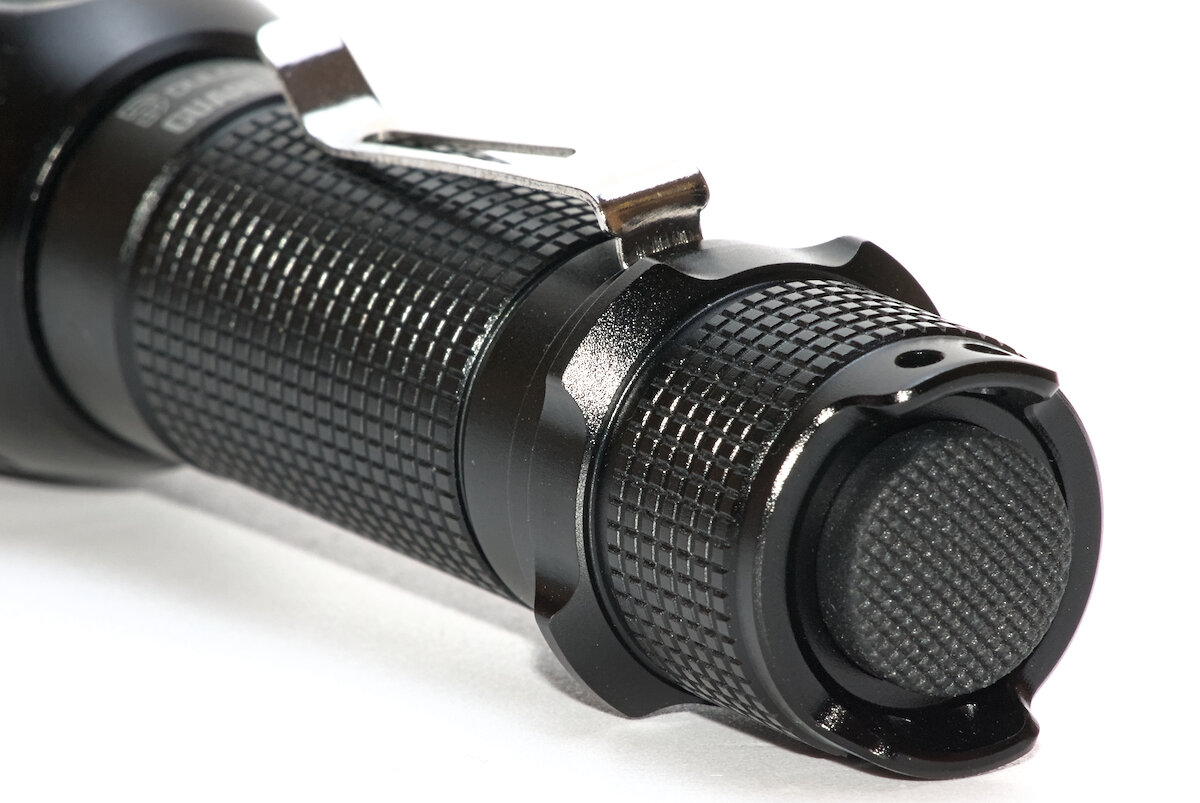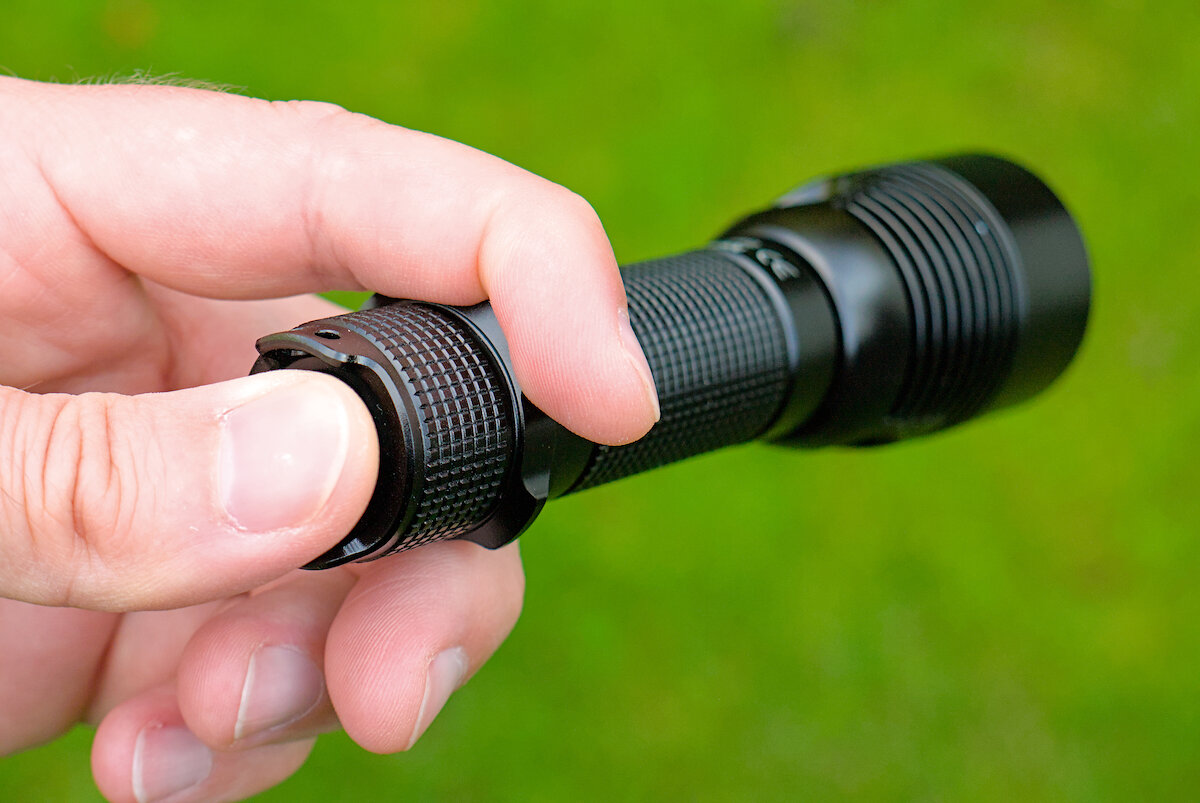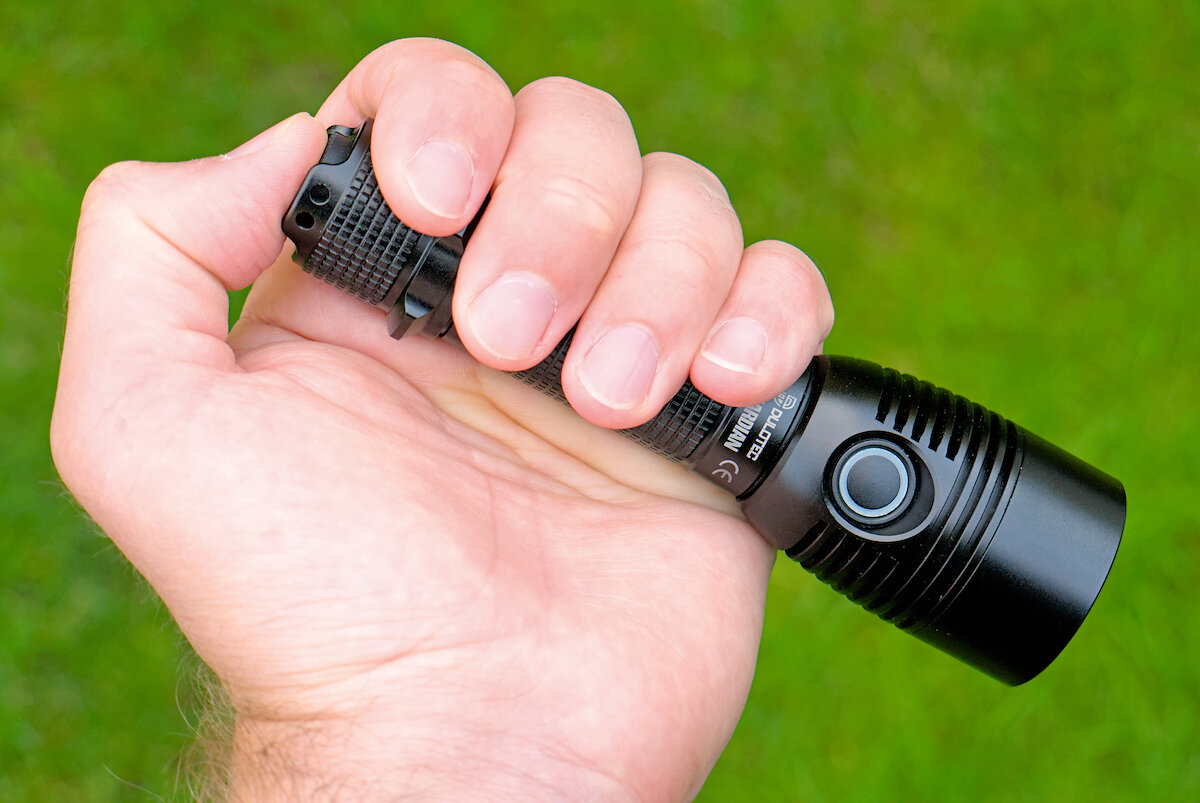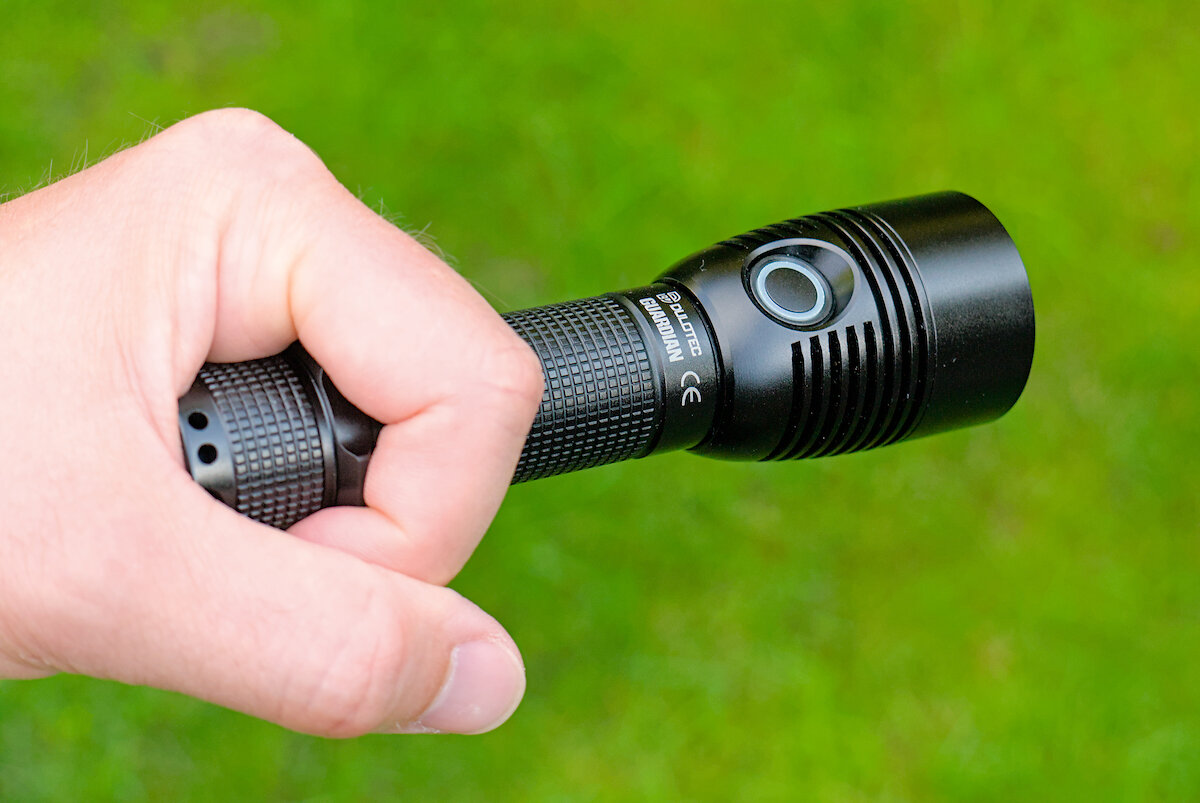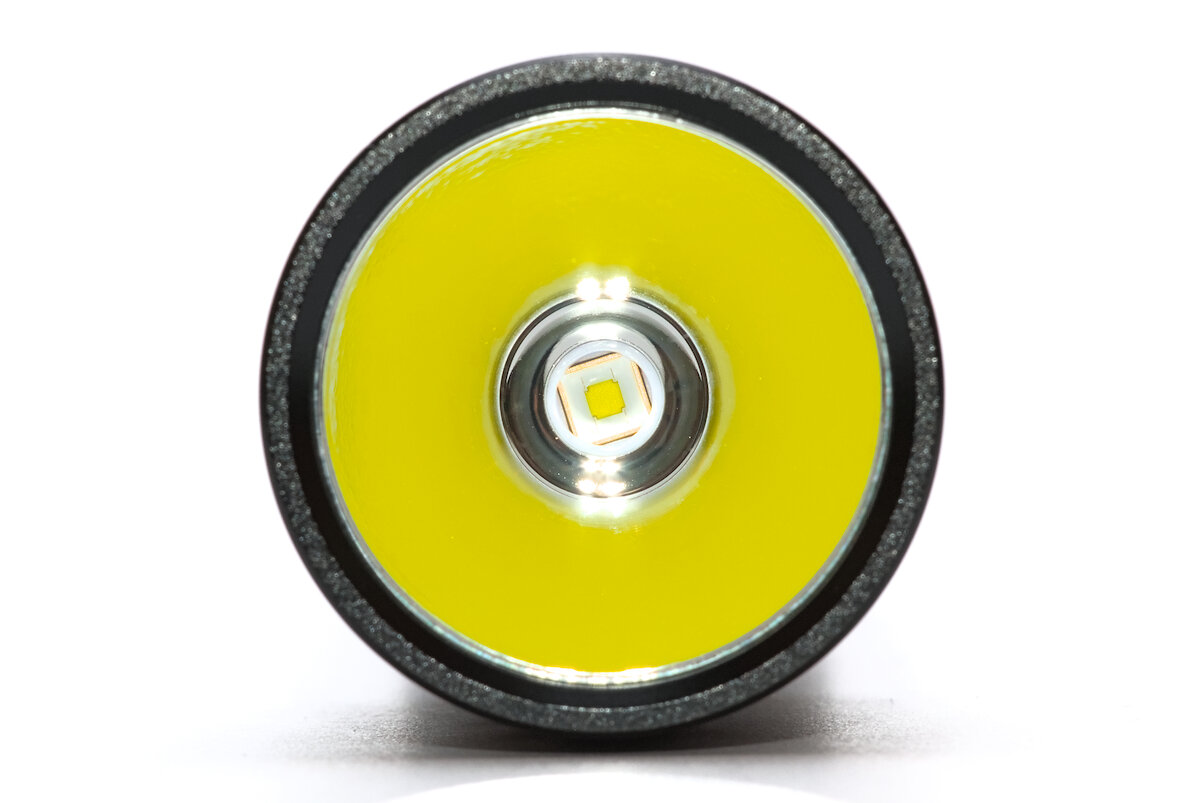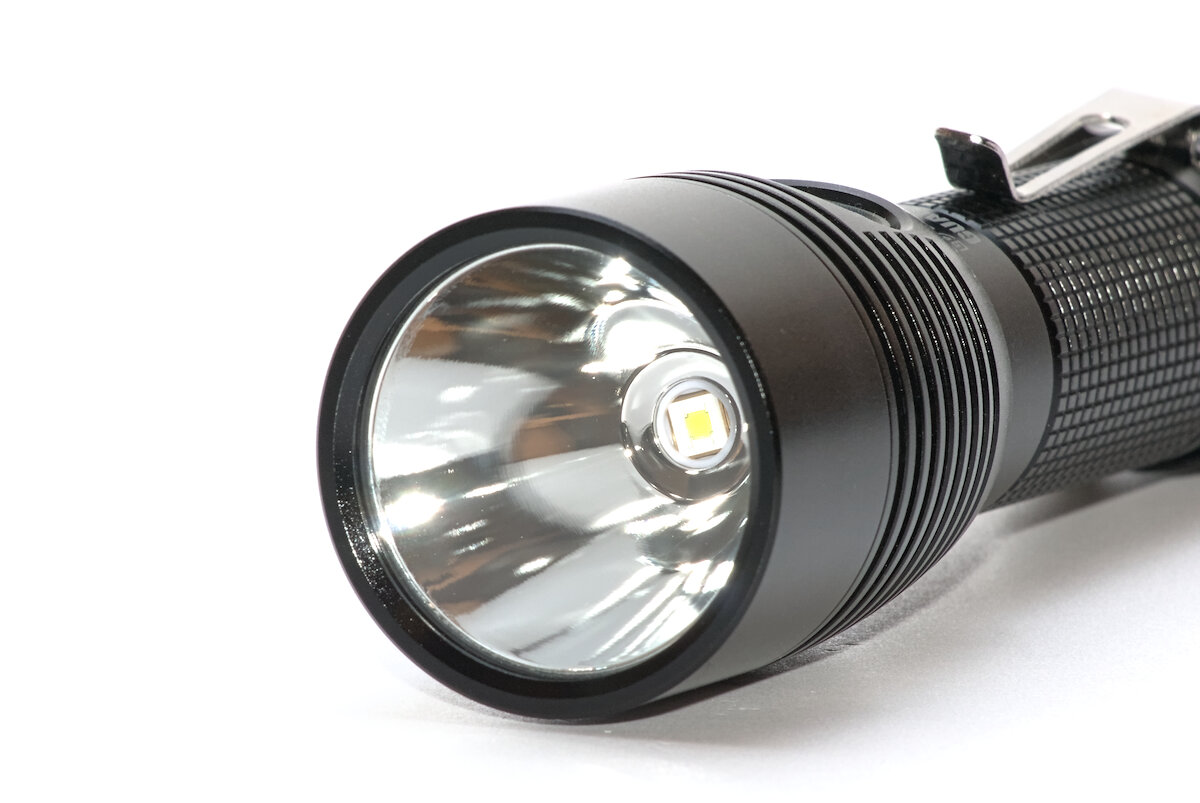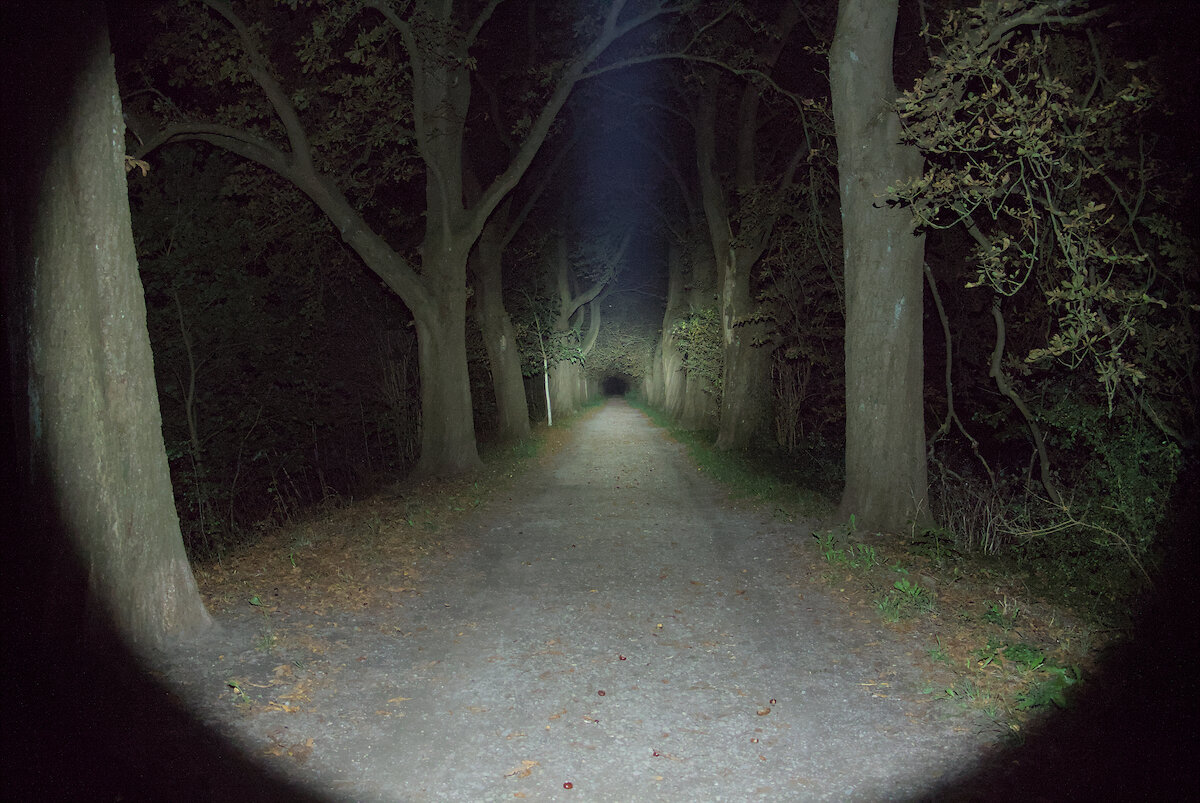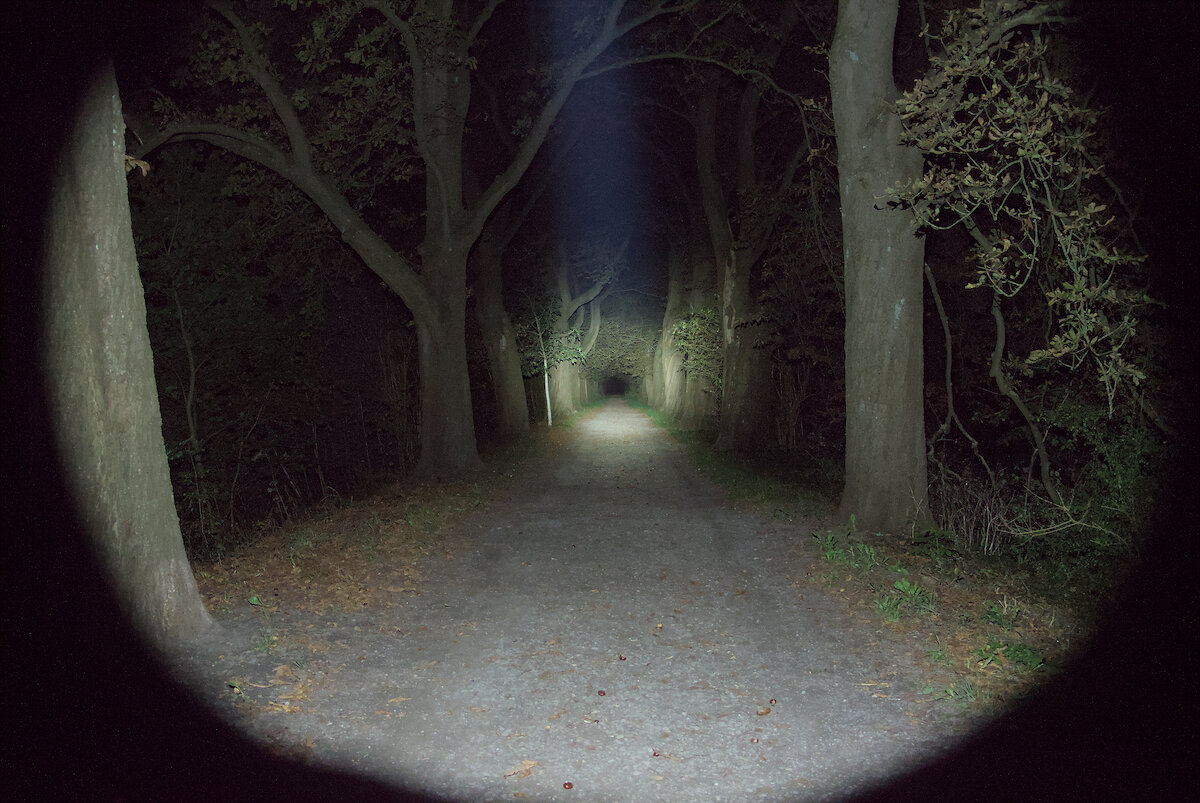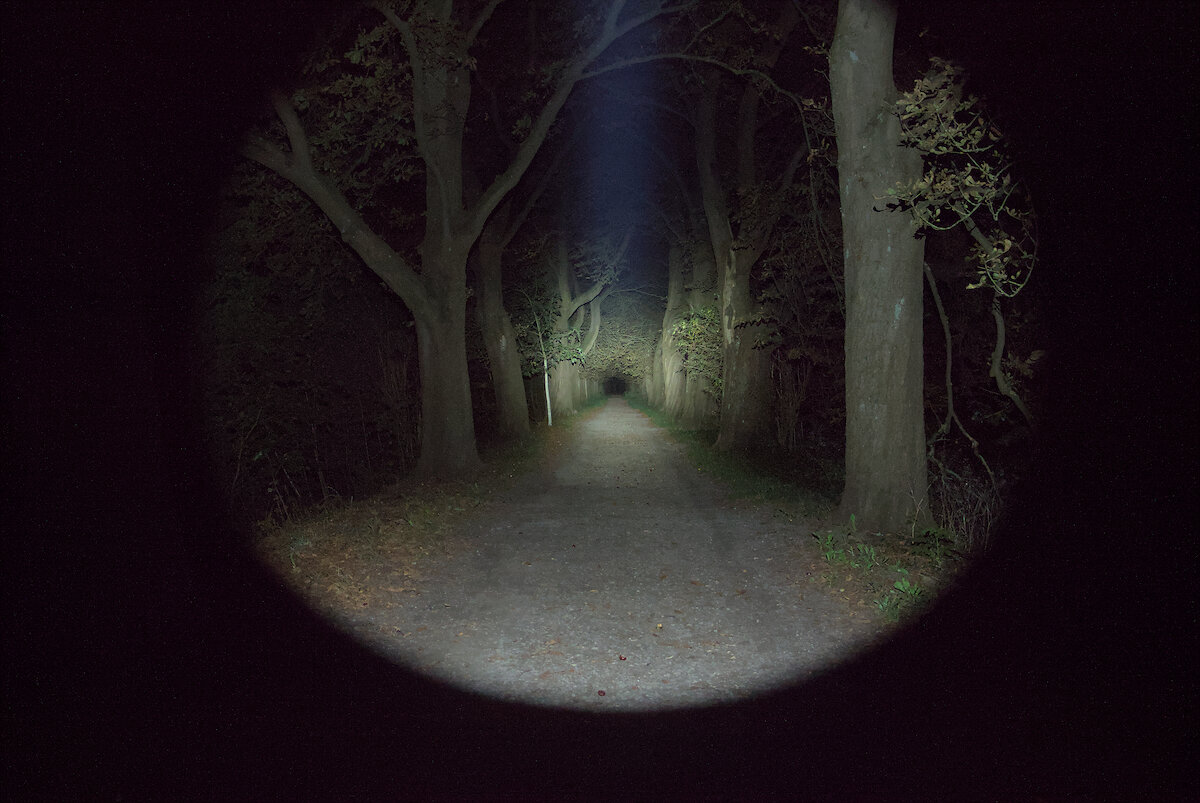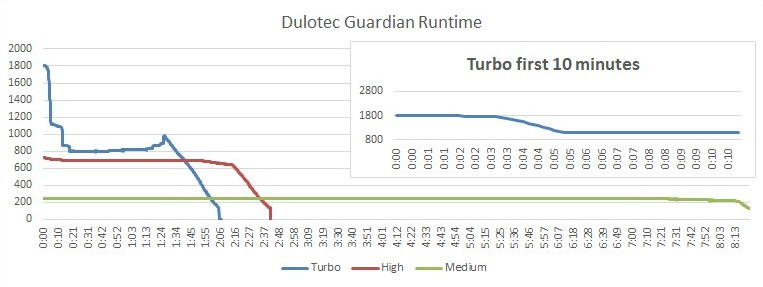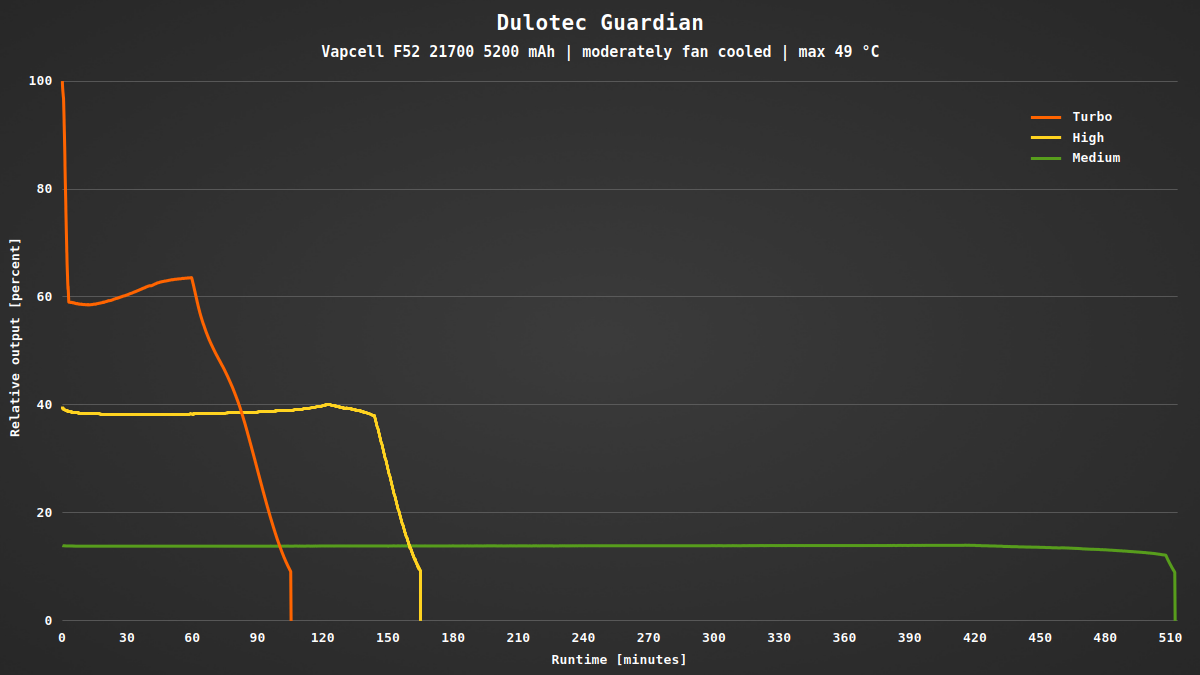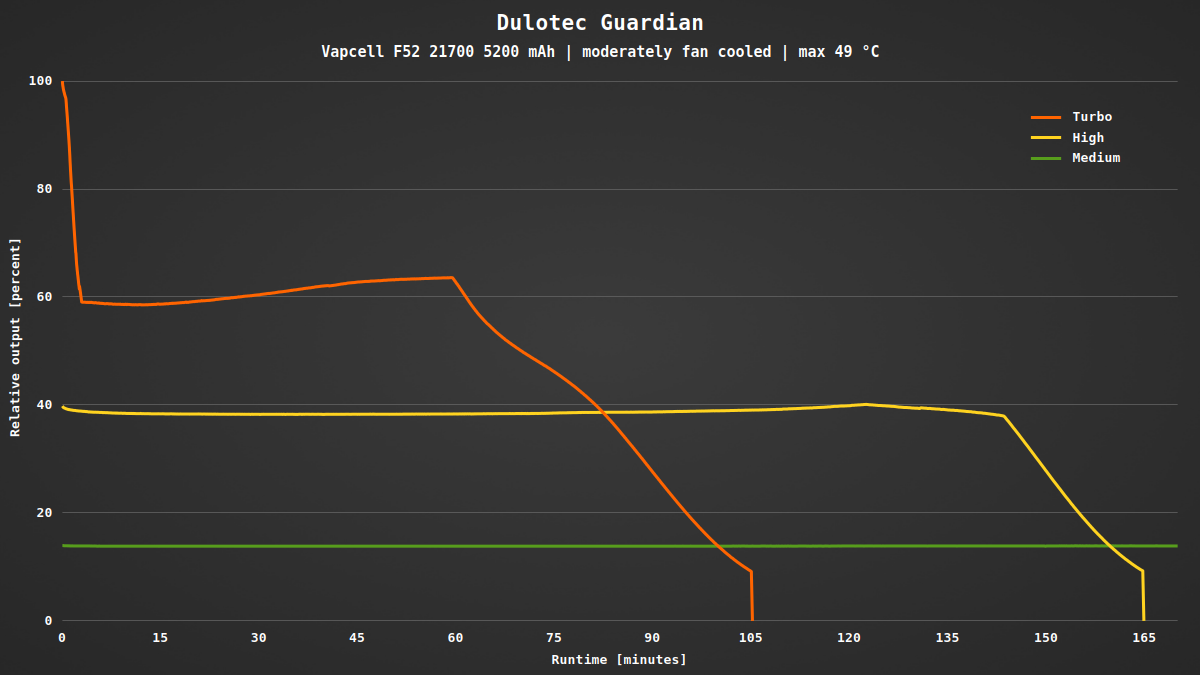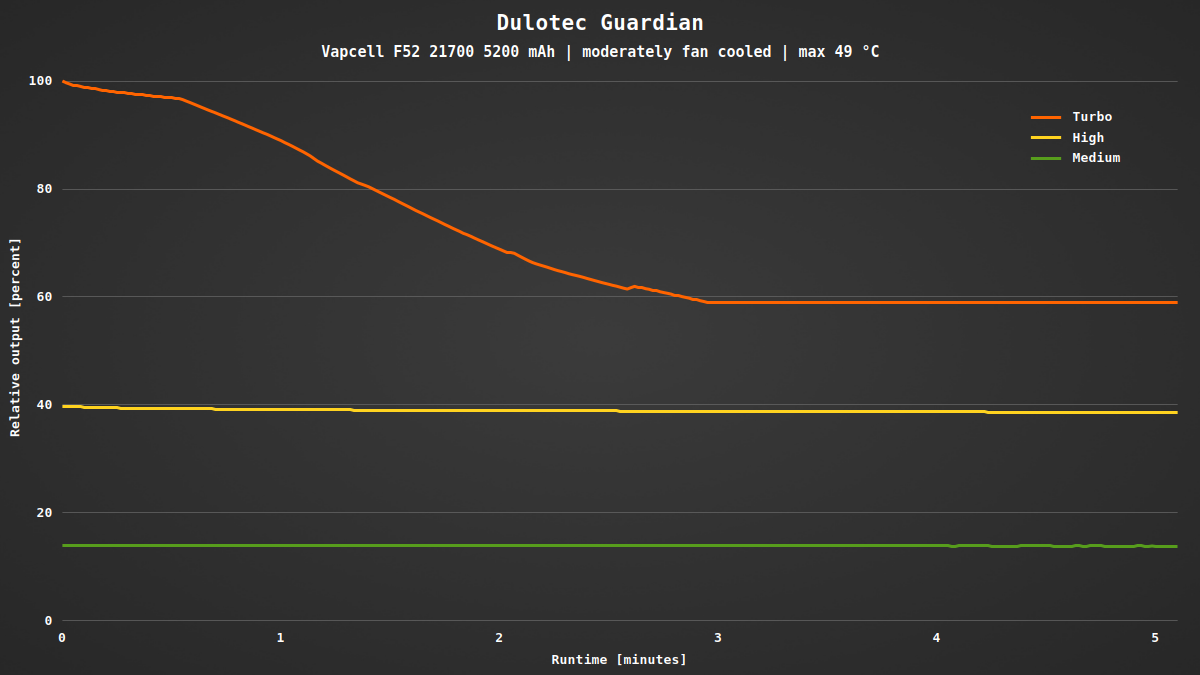Whenever I review a flashlight, the most interesting part is the surprise. You never know exactly what you’ll find out, especially if it’s the first time you get a flashlight from a manufacturer. So I was very curious when I got contacted by our fellow member @yasenf if I’d be interested in testing his own flashlight model. Yeah, of course!
Shortly after, the “Dulotec Guardian” arrived in my mailbox. Never heard of this manufacturer before. No wonder, it’s from Bulgaria and in the past mostly sold flashlights from other manufacturers. But now Yasen designed his own flashlight. So let’s see how it performs.
The review is also available in German on my website: SammysHP Blog › Dulotec Guardian
Disclaimer: This review got delayed by a few weeks due to a nasty Covid infection and the death of my lovely computer that spontaneously decided to stop booting one day (not even POST) while I was editing the photos. I’m feeling better now and my new computer is almost domesticated, just a ton of little quirks that I have to accommodate for.
Supplied parts and hardware
- Vapcell F52, 21700 Li-ion battery with 5200 mAh (4.12 V on delivery)
- Clip (already attached)
- Magnetic charging cable
- Holster
- Lanyard
- (A4 print of a manual in English)
There aren’t any replacement o-rings, but I never used them in the past. If you need one, you’ll probably find a suitable one in your local hardware store.
The manual was half a page printed on A4 paper. Not sure if this is the official manual or just a translation for me. I guess the official one will be in Bulgarian.
When I opened the box, I immediately noticed the small size of the Guardian. Only 141 mm long and thus short for a tactical flashlight of this kind. The head has a diameter of 38.7 mm, the battery tube 25.4 mm – exactly 1" and thus compatible with many mounts. It weights 125 g plus 71 g for the battery.
In this review I mostly compare the Guardian to the Cyansky K3 v2 and the Klarus XT12GT Pro. All three are tactical flashlights with the same SFT-40 LED and similar beam characteristics.
The design is a real classic. Yasen explained to me, that it is based on the “Eagle Eye X6” from 2014. I like it! The knurling is soft, but definitely improves the grip. The rest of the surface is smooth and shiny.
Many “tactical” flashlights come with a prominently crenelated bezel that can be used to smash windows (and heads?) – a feature I never used. The simple bezel of the Guardian makes it appear less aggressive and more suitable for daily use.
The hyperbolic shaped head has several cooling fins that are nicely deburred. At the side there is an illuminated switch, slightly recessed.
The tailcap with a forward clicky switch has also two fins with four holes to attach a lanyard and to allow tailstand (not very stable, though). A little to the front is an integrated tactical ring, that helps handling the flashlight and prevents the light from rolling away on a flat surface.
The clip is simple and feels a bit cheap, but it works. The important detail is that it is secured by the tailcap and can not be removed accidentally. Very nice!
If you prefer to carry the flashlight on your belt, you can use the supplied holster. At first I didn’t plan to go into detail, but then I noticed the details, so…
It has a very firm and thick material, like hard foam with nylon webbing at the outside, smooth at the inside. The ends of the elastic sides are secured by extra seams. Edges are covered with a tape that is thermally fused at the end. You have the choice between a closed loop and one that is held by a snap button and velcro.
A magnetic connector is used to charge the battery. It is located opposite of the side switch. Nice detail to improve resistance against water and dirt.
While the connector is illuminated when connected to a power supply, the cable doesn’t contain any other electronics. This is a problem because it likes to stick to metal surfaces, which causes a short of the power supply. So be careful while it is connected to a USB power supply!
The mechanical tail switch completely breaks the circuit. Thus it has to be turned on to charge the flashlight. Once the (powered) cable is connected, the light turns off. While charging the side switch blinks green, on a full battery (or when the tail switch is turned off) it lights up constantly.
The contacts at the flashlight do not have any voltage at any time and won’t create sparks when shorted. Still it’s not an ATEX approved flashlight and shouldn’t be used in explosive environments.
Many parts of the design are cost optimized. For example the inner parts of the tailcap aren’t secured by a retaining ring, but just by a bent wire. It works, but feels a little cheap. Everything will wobble around until the tailcap is tightened.
The rectangular threads with 2¼ turns has a depth of only 0.35 mm. Seems to be enough. It’s anodized, so mechanical lockout is possible.
The driver is held in place by a retaining ring. The spring is very thin and sits on top of a plastic spacer. I think this flimsy spring can affect the performance of the flashlight due to a higher resistance. It’s also very dark and non-magnetic. Might be uncoated beryllium copper (BeCu) or phosphor bronze.
Overall the flashlight has a professional, high quality appearance, but you will find parts that are the results of cost optimization. But important parts were carefully designed to be reliable. The manufacturer only rates the flashlight at IP66 which means that it shouldn’t be submerged in water. But heavy rain should be OK.
User interface and features
There are two control elements on the flashlight: A tail switch, forward-clicky with silicone cover. It is used to turn the flashlight on and off. While holding you’ll get momentary light in turbo or last used brightness (depends on the configuration). A quick double press enables strobe. When you press the switch completely it will stay on in the current mode.
You need some force to actuate it and it works only reliably when you press it in the middle.
The side switch works only when the flashlight is turned on. Pressing it changes the brightness. A short press switches through turbo, high, medium and low. A double press turns on strobe, another double press switches to SOS and beacon.
If you hold the side switch for three seconds, the flashlight turns off (while the switch stays illuminated). Turn it on by holding the side switch again for three seconds or turn the tail switch off and on again.
Tap the side switch ten times while to flashlight is on to toggle mode memory. This lets you choose if the light turns on in turbo or the last used brightness.
| State | Action | Function |
|---|---|---|
| Off | Half press tail switch | Momentary light |
| Off | Fully press tail switch | Turn on |
| Off | Tap and half press tail switch | Momentary light (strobe) |
| Off | Tap and fully press tail switch | Turn on (strobe) |
| On | Fully press tail switch | Turn off |
| On | Shortly press side switch | Change brightness (Turbo → High → Medium → Low) |
| On | Double press side switch | Strobe (further double click switches to SOS and beacon) |
| On | Hold side switch 3 s | Turn off (side switch stays illuminated), hold 3 s again to turn on |
| On | Press side switch 10 times | Turn on/off mode memory |
I wish there was a way to turn it on in the lowest mode. Often this is possibly by holding the side switch while turning on the light. But then it would be better to have the levels in increasing order.
While the flashlight is turned on, the side switch is illuminated in green. This makes it easier to find. When the battery has a low charging level, the button will start blinking.
Due to its small size the Dulotec Guardian is easy to handle. Depending on the size of your hand it’s possible to reach both switches at the same time. Otherwise you have to change your grip to change the brightness. The side switch is easy to locate by feel, but you have a 50% chance this miss it and press on the charging port.
Many tactical flashlights come with a tactical ring made out of silicone that can be slid onto the battery tube. It will allow for a better grip of the flashlight. The Guardian has this tactical ring integrated into the tailcap. It’s small enough to not disturb you, but large enough to do its job. It also prevents the flashlight from rolling away.
One way of holding the flashlight with this ring is the “cigar grip” where you hold the flashlight between two fingers and control it with your thumb.
It also improves the handling with the regular tactical grip because it prevents the flashlight from sliding through your hand.
I also like this kind of grip where you hold the flashlight very firmly between two fingers. The switch is actuated by the inside of your thumb/hand by closing your fist. The high resistance of the tail switch makes this a little hard to use unfortunately.
Illumination
Bright light, high throw – that’s what you want for a tactical flashlight. A floody beam is nice for close-up range, but blinds you if you want to illuminate something further away.
The Dulotec Guardian uses a cool white Luminus SFT-40. Small area with high intensity and a slightly rounded form makes it a good choice for a thrower. Brightness and efficiency are more important than CRI in this case.
To get the required throw the LED sits in a deep reflector. The tight spot and the even spill makes me think that the geometry of the reflector is right. It is “smooth”, but you see some tiny rings from the machining. It’s not polished, which might reduce the throw, but on the other hand evens out small imperfections. The glass doesn’t have anti-reflective coating.
In comparison between the three flashlights, the Dulotec Guardian has a similar small pot as the Klarus, but the largest and brightest spill from all three. The spot also has a large, soft corona, which makes it the most universal beam.
Driver and runtime
The product description includes a detailed runtime graph in addition to boring numbers in a table. Nice detail!
| Mode | Brightness¹ | Runtime¹ | Intensity¹ (Throw²) | Current³ |
|---|---|---|---|---|
| Turbo | 1800 lm | 2 h 1 min | 123 000 cd (700 m) | 6.25 A |
| High | 720 lm | 2 h 41 min | 64 000 cd (500 m) | 1.95 A |
| Medium | 247 lm | 8 h 23 min | 28 000 cd (334 m) | 0.58 A |
| Low | 25 lm | 49 h 56 min | 2 800 cd | (100 m) |
| Off | ––– |
¹ According to manufacturer ² ANSI FL1 ³ Measured
My measurements mostly match the manufacturer specifications. Slight differences in the turbo might be the result of my cooling. The Guardian should have a temperature protected that limits its temperature to 60 °C. In my tests it never exceeded 49 °C.
The two middle levels have a heavy, perfectly sine shaped modulation of 19.5 kHz (medium) and 25.0 kHz (high). Due to the high frequency it isn’t visible by eye.
Once the driver isn’t able to maintain a constant output due to low voltage, the side switch starts blinking. For example this is the case at around 3.15 V at low. If the voltage reaches 2.75 V the flashlight turns off the protect the battery from deep discharging.
Conclusion
Dulotec did a lot of things right with their first self-designed flashlight. Beam, handling and operation, the Guardian can impress in many practical situations of tactical use. Care was taken to keep the costs down, while keeping attention to details such as the integrated tactical ring or the magnetic charging port.
We’ll see whether the compromises are a disadvantage in terms of longevity. True IPX8 and the certainty that the flashlight will survive tough use might be a good idea for a tactical flashlight. The UI is good, but direct access to the lowest level would be nice.
If you got curious, you might run into issues with the international availability of the flashlight. Right now it is only available at this Bulgarian shop.
